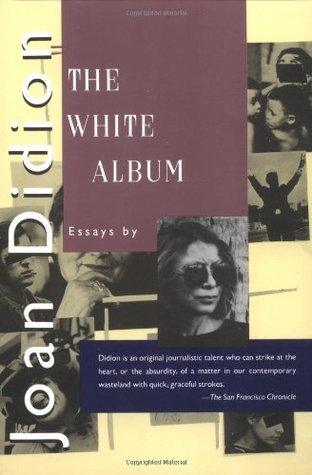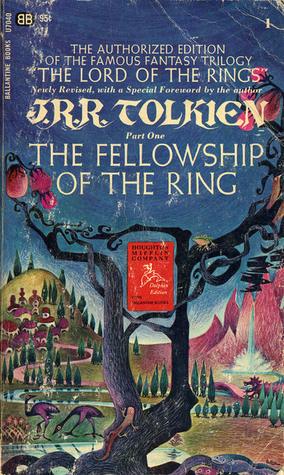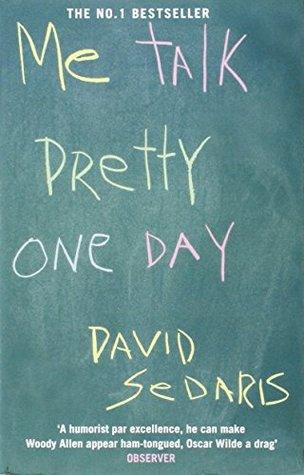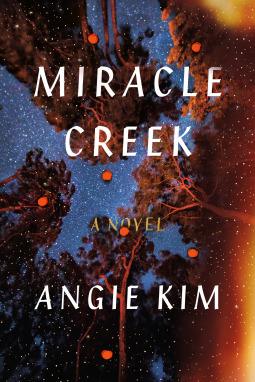The White Album by Joan Didion Book Summary
Discover a comprehensive summary and insightful review of Joan Didion's "The White Album." Explore key themes, memorable anecdotes, and critical analysis that illuminate Didion's unique perspective on culture and identity. Perfect for fans and newcomers alike!
The White Album Book Summary
Joan Didion's "The White Album" stands as a masterpiece of personal journalism, weaving together fragmented observations of late 1960s America with intimate reflections on mental breakdown and cultural upheaval. This collection of essays captures a pivotal moment when the idealistic dreams of the decade collided with harsh realities, from the Manson murders to political assassinations. Didion's razor-sharp prose and psychological insight reveal how personal and societal chaos mirror each other, making this work essential reading for understanding both American culture and the art of literary nonfiction.
Discover profound themes and character insights in The Brothers Karamazov Book Summary, Review & Key Insights to deepen your understanding of Dostoevsky's masterpiece.
The White Album by Joan Didion - Introduction
I had no idea that a book could feel like stepping into someone else’s mind during one of the most chaotic times in American history—and still make me question how we all process the world around us. That’s exactly what happened when I picked up The White Album by Joan Didion. At first, I grabbed it because I’d heard it was a classic collection of essays and memoir pieces about the 1960s and 70s, but it turned out to be so much more than just history or journalism.
What surprised me most was how Didion’s writing made me rethink the idea of memory and truth—how the stories we tell ourselves about a moment can be so fractured and subjective, yet still deeply revealing. It’s like she’s saying, “You think you know what happened, but maybe you’re only seeing a piece of the puzzle.” That insight stayed with me long after I closed the book.
If you’re someone who loves digging into American history, or you appreciate sharp, personal nonfiction that blends memoir with cultural critique, this book will speak to you. It’s perfect for anyone curious about the tangled emotions behind the headlines, especially from a woman’s perspective in the 20th century. Plus, at just 222 pages, it’s a manageable read that you can finish in a few evenings.
Honestly, reading The White Album felt like having a deep conversation with a brilliant friend who isn’t afraid to be honest about the messiness of life. You should definitely check it out—it might just change how you see those turbulent decades, and maybe even your own memories.
What is The White Album About?

The White Album by Joan Didion is a collection of essays that reflect on the chaotic cultural landscape of America in the late 1960s and early 1970s, exploring themes of disillusionment and fragmentation. The main message emphasizes the struggle to find coherence in a society marked by upheaval and uncertainty, highlighting the personal and collective crises of that era. Key concepts include the impact of personal experience on understanding broader societal issues, the interplay between memory and identity, and the search for meaning amidst chaos and cultural change.
About Book Author - Joan Didion
Tonight, we're joined by a voice that truly defines an era. Joan Didion didn't set out to be a chronicler of American anxieties, but her path, deeply Californian, led her straight into the heart of the late 1960s. This immersion, this direct witness, is what breathes life into The White Album.
- What's particularly compelling about Joan Didion's journey is how her own internal experiences, even her struggles with what she termed "neurological weather," seemed to give her a unique lens on the external chaos. She possesses an almost unparalleled ability to dissect the zeitgeist, a talent evident from Slouching Towards Bethlehem to the profound personal insights of The Year of Magical Thinking. She wasn’t just reporting on the cultural fractures of the time; she was navigating them, making her uniquely qualified to write The White Album with such raw, undeniable truth.
More Books To Find
The White Album - Book Overview
It's a collection of essays that captures the chaos of America in the late '60s and early '70s through Didion's sharp observations. She delves into her personal experiences, reflecting on everything from Hollywood to the Manson murders, making it feel both intimate and expansive.
Didion wrote it to confront the disarray she saw around her. It’s not just about recounting events but about grappling with the feeling of losing control in a rapidly changing world. There’s a deep sense of searching for meaning amidst the madness, which resonates on a personal level.
What sets it apart is Didion's unique voice and style. Unlike many other books that tackle the same era, she blends personal narrative with cultural critique in a way that feels like a conversation rather than a lecture. It’s as if she’s inviting you into her thoughts while she navigates the tumultuous landscape of her time.
One story that really stuck with me is her account of the Manson family. Didion doesn’t just recount the facts; she immerses you in the atmosphere of fear and confusion, making it palpable. It’s like she’s holding up a mirror to society, showing us how easily we can slip into chaos, which feels eerily relevant even today.
Key Insights of The White Album
The White Album offers profound insights into the chaotic landscape of 1960s America through Didion's unique lens.
Personal Fragmentation: Didion explores her own disintegration amidst the cultural upheaval, reflecting on how personal experiences mirror the broader societal chaos. Her narrative intertwines personal anecdotes with historical events, emphasizing the disconnect between individual lives and the tumultuous world around them.
Cultural Critique: The book serves as a sharp critique of the mythology surrounding the 1960s. Didion dissects the idealism of the era, revealing the darker undercurrents of violence, disillusionment, and despair that often accompany such cultural revolutions.
Narrative Style: Didion’s stream-of-consciousness writing style immerses readers in her thoughts and emotions, creating an intimate connection. This technique allows her to convey the confusion and fragmentation of her experiences, making the reader feel the weight of her observations.
The Role of Media: The author examines the influence of media on public perception and reality. She highlights how media narratives shaped the understanding of events, often distorting the truth and contributing to a collective sense of paranoia and fear.
Search for Meaning: Ultimately, Didion’s work is a meditation on the quest for meaning in a disordered world. Through her reflections, she grapples with existential questions, illustrating the struggle to find coherence amidst chaos and the importance of storytelling as a means of making sense of the incomprehensible.
Who Should Read This Book
"The White Album" by Joan Didion is a must-read for anyone interested in the complexities of American culture during the 1960s and 70s. It appeals to literature enthusiasts, students of history, and fans of memoirs who seek a deeper understanding of societal shifts. Those who appreciate sharp, introspective writing will find Didion's unique voice compelling. Additionally, readers drawn to themes of identity, disillusionment, and the chaotic nature of modern life will resonate with her essays. Ultimately, this book is for anyone looking to explore the intersection of personal experience and broader cultural narratives.
Read If You Are
- A fan of introspective and personal essays that explore cultural and social issues.
- Interested in the intersection of art, politics, and personal experience in 1960s America.
- Seeking a deep and reflective examination of identity and the human condition through a unique narrative style.
Skip If You Are
- Not interested in personal essays or memoirs that explore the author's life and experiences.
- Prefer straightforward narratives without introspective or philosophical elements.
- Dislike literature that delves into cultural and social critiques of the 1960s and 1970s.
Important Takeaways from this Book
-
Start a daily journal: Set aside 10 minutes each day to jot down your thoughts and experiences. This practice enhances self-awareness and clarity, allowing you to process emotions and ideas more effectively. No prerequisites needed; just grab a notebook or use your phone.
-
Embrace uncertainty: When faced with decisions, acknowledge that uncertainty is part of life. Practice making small decisions without overthinking. This builds resilience and confidence in your ability to navigate challenges. Consider starting with everyday choices, like what to eat or which route to take.
-
Observe your surroundings: Dedicate time to quietly observe your environment—whether it’s your neighborhood or a local café. Take mental notes of details that catch your attention. This sharpens your observational skills and deepens your appreciation for everyday life. No special tools required; just your senses.
-
Engage in creative expression: Choose a creative outlet—writing, painting, or music—and spend at least 30 minutes a week on it. This fosters emotional release and personal growth, helping you articulate your feelings. You don’t need to be an expert; just allow yourself to explore freely.
-
Connect with others: Reach out to a friend or family member you haven’t spoken to in a while. Schedule a call or coffee date. Building and maintaining relationships enhances your emotional well-being and creates a support network. No prerequisites; just a willingness to reconnect.
Book Review
I picked up "The White Album" by Joan Didion expecting a straightforward memoir, perhaps a collection of personal anecdotes woven together with a clear narrative thread. What I got was a beautifully fragmented exploration of the 1960s and 70s California, filled with Didion's sharp observations and haunting prose.
One of the strengths of this collection is Didion's writing style. Her ability to capture the essence of a moment is breathtaking. In “Some Dreamers of the Golden Dream,” she paints a vivid picture of a murder case that reflects the disillusionment of the era. The pacing varies; some essays flow seamlessly while others require more patience, which may frustrate readers looking for a quick read.
However, I did find that some pieces felt a bit disjointed, making it hard to connect with the overarching themes at times. For example, while the essay on the Black Panthers was insightful, it felt less cohesive compared to her more personal narratives. A bit more context could have tied those pieces together more effectively.
Comparatively, Didion's work reminds me of “Slouching Towards Bethlehem” by the same author, but I found "The White Album" to be even more introspective, albeit less accessible at times.
Overall, I appreciated Didion’s unique perspective, but I’d recommend this book to readers who enjoy literary essays that challenge conventional storytelling. If you prefer a more linear narrative, you might want to look elsewhere. For those willing to embrace the complexity, Didion’s insights are undeniably rewarding.
Final Thoughts
If I'm being honest, finishing The White Album left me with a mix of admiration and contemplation. Didion's ability to weave personal narrative with broader cultural commentary is truly impressive. My overall takeaway is that it's a profound exploration of the chaotic 1960s, reflecting on the disarray of society and the individual psyche.
I'd definitely recommend this if you're a fan of introspective writing or interested in the intricacies of American culture. However, skip this one if you're looking for a straightforward narrative or something light-hearted; it can be quite dense and requires a bit of patience.
The thing that surprised me most was how Didion's observations felt eerily relevant today, resonating with the current state of our world. One thing that will stick with me months from now is her poignant reflection on the fragility of reality, which makes you think twice about how you perceive your own experiences.
As for whether I'd read it again or recommend the full book versus a summary, I think the full book is worth it for the depth and nuance you miss in a summary. Personally, I found the reading experience to be both challenging and rewarding, and I appreciate the layers Didion brings to her storytelling.
Frequently Asked Questions
How long does it take to read The White Album?
The White Album by Joan Didion is 222 pages long. On average, it takes about 6-8 hours to read, depending on your reading speed and engagement with the text. Enjoy the immersive experience of Didion's insightful prose!
What makes "The White Album" different from other books in this genre?
The White Album stands out due to Didion's unique blend of personal narrative and cultural critique, capturing the chaos of the 1960s. Her distinctive voice and keen observations create an intimate yet expansive exploration of American life, making it a seminal work in the genre.
Who is the target audience for The White Album
The target audience for "The White Album" includes readers interested in American culture, literary nonfiction, and those who appreciate introspective essays. It appeals to fans of Joan Didion, as well as individuals seeking insight into the 1960s and 1970s societal shifts and personal narratives.
Are there any criticisms or limitations of The White Album
Critics often point to Didion's fragmented narrative style as a limitation, arguing it can be disjointed. Some readers feel her personal reflections overshadow broader social commentary, while others note the book's focus on California may limit its relevance to wider audiences.
What is the main theme of The White Album by Joan Didion
The main theme of "The White Album" by Joan Didion revolves around the disintegration of American culture in the 1960s. Through personal essays, Didion explores chaos, identity, and the complexities of life in California, reflecting on societal upheaval and the search for meaning amidst uncertainty.
Tags:
Joan Didion, The White Album, The White Album Book, The White Album Book Rating, The White Album Book Review, The White Album Book Summary, The White Album By Joan Didion, The White Album Description, The White Album Short Summary

Michel Fisher
Michel Fisher is a passionate fiction enthusiast and book blogger who writes about emotional reads, character-driven stories, and contemporary romance authors that captivate hearts and minds.

The White Album
Book Overview
Description
First published in 1979, "The White Album "is a journalistic mosaic" "of American life in the late 1960s and throughout the 1970s. It includes, among other bizarre artifacts and personalities, reportage on the dark journeys and impulses of the Manson family, a visit to a Black Panther Party press conference, the story of John Paul Getty's museum, a meditation on the romance of water in an arid landscape, and reflections on the swirl and confusion that marked this era. With commanding sureness of mood and language, Didion exposes the realities and dreams of an age of self-discovery whose spiritual center was California. Table of ContentsI. THE WHITE ALBUM"The White Album" II. CALIFORNIA REPUBLIC"James Pike, American""Holy Water""Many Mansions""The Getty""Bureaucrats""Good Citizens""Notes Toward a Dreampolitik" III. WOMEN"The Women's Movement""Doris Lessing""Georgia O'Keeffe" IV. SOJOURNS"In the Islands""In Hollywood""In Bed""On the Road""On the Mall""In Bogota""At the Dam" V. ON THE MORNING AFTER THE SIXTIES"On the Morning After the Sixties""Quiet Days in Malibu"
Key Points
Cultural disintegration in 1960s America
Characters
Publisher
Farrar Straus Giroux
First Publish Date
10/28/79
Awards
National Book Critics Circle Award Nominee for General Nonfiction (1979), National Book Award Finalist for General Nonfiction (Paperback) (1981)





